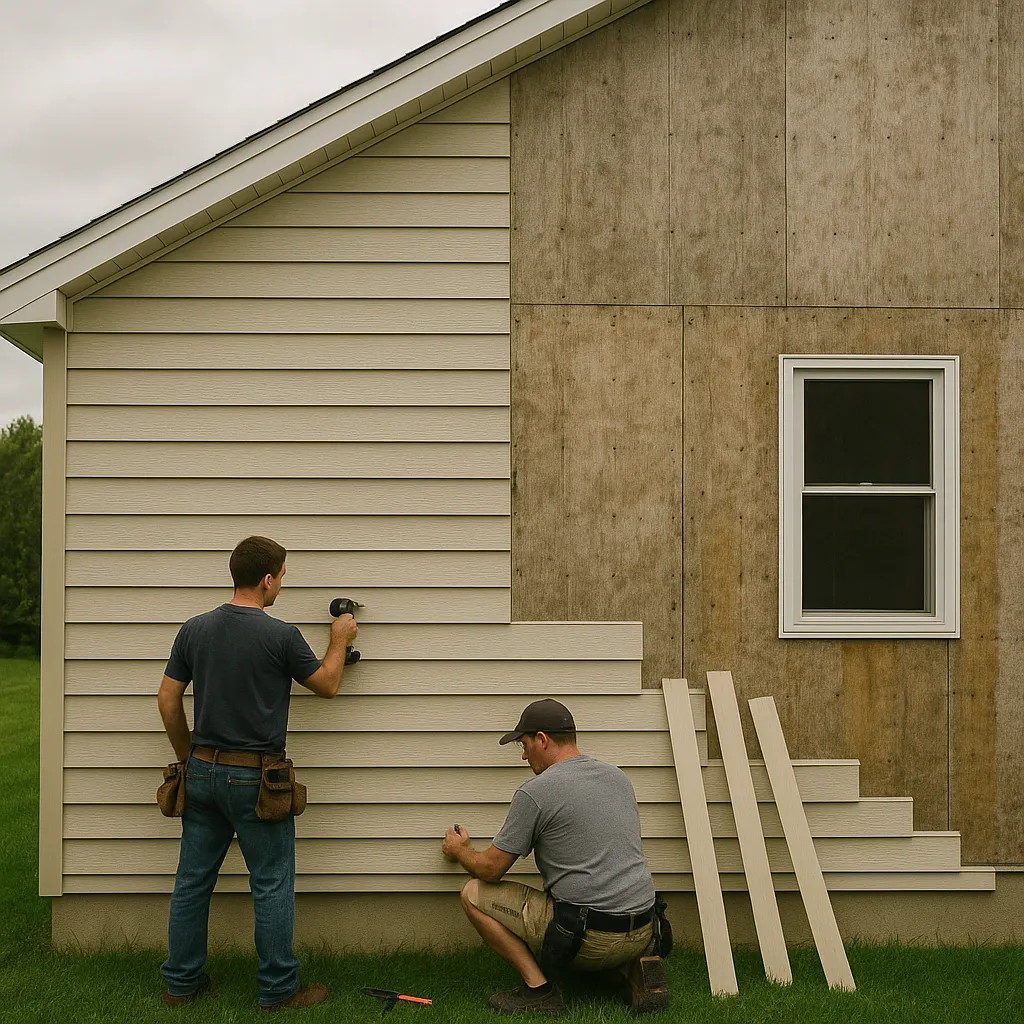
When to Replace Your Home’s Siding: Signs to Watch For
When to Replace Your Home’s Siding: Signs to Watch For
Knowing When It’s Time for a Siding Upgrade
Your home’s siding isn’t just about aesthetics—it’s the first line of defense against weather, moisture, and pests. Over time, even the most durable siding will wear out. Knowing the signs of failure can save you from expensive structural damage and help maintain your property’s value.
If you’re wondering whether your siding is past its prime, here are the most common signs it’s time for a replacement:
1. Warping, Buckling, or Bulging Panels
Warped or misshapen siding is a clear indicator of underlying moisture issues. These distortions often mean that water has seeped behind the siding, causing it to expand or detach.
🛠 Warning: Left untreated, this can lead to mold growth and rot beneath the surface.
2. Cracks, Holes, or Visible Damage
Storms, hail, and everyday wear can cause cracks, dents, or holes—especially in vinyl or aluminum siding. Even small openings let in water and pests, compromising your home’s protection.
🌧 Quad Cities Tip: After major storms, always inspect your siding for hidden damage.
3. Fading or Peeling Paint
If your siding needs frequent repainting, or if the color has significantly faded, it may no longer be functioning as it should. Quality siding should retain its color and finish for many years.
🎨 Efficiency Check: Fading is often a sign that UV protection and weather resistance have broken down.
4. Increased Energy Bills
Rising heating and cooling costs may signal that your siding is no longer insulating your home properly. Gaps, aging insulation, and degraded siding can all contribute to energy loss.
💡 Energy Tip: Consider insulated siding for a long-term energy-efficiency upgrade.
5. Mold, Mildew, or Dry Rot
Persistent moisture can cause mold or mildew stains, especially near seams or lower areas of the home. If you notice signs of dry rot—where the siding crumbles at the touch—it’s time for immediate replacement.
🧽 Maintenance Tip: Mold is often a surface problem, but dry rot usually signals internal damage.
6. Loose or Missing Siding Panels
Wind and harsh weather can cause panels to pull loose or fall off entirely. Gaps in your siding reduce your home’s weather resistance and can cause significant hidden damage if ignored.
🌬 Local Weather Note: High winds in the Midwest make secure siding installation essential.
Is It Time for a Siding Upgrade?
If your siding shows any of these signs, don’t wait until problems escalate. A timely siding replacement improves curb appeal, energy efficiency, and protects your home for decades to come.
Need a professional siding inspection in the Quad Cities?
Contact Twin Bridge Roofing & Construction today for expert recommendations and a free estimate.
📞 (563) 655-4902 | 🌐 www.roofqc.com